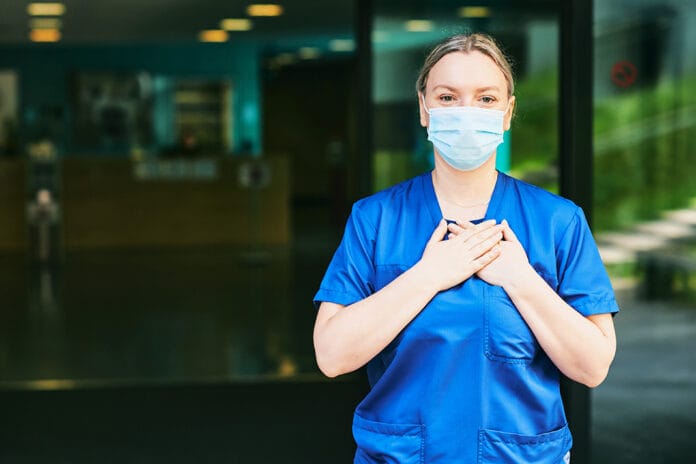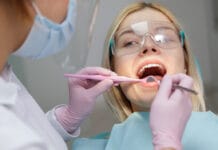Being a dental hygienist is hard; demanding a lot from you physically, emotionally, and mentally. You sit for six to eight hours digging into gingival pockets and interdental areas, scaling all the calculus with remnants of last night’s dinner. It requires steady hands, sharp eyesight, and a not-so-faint heart. Mucous, saliva, and blood are our daily companions.
Then there are the difficult patients who test your patience to the limit and, bit by bit, drain you of your sanity. Watching the clock as we do a procedure is a habit that is ingrained in us. Patients move to the left when you ask them to move right, suddenly jerking their heads while you have a scaler inside their mouths. Patients biting on your fingers are pretty much normal.
In summary, being a dental hygienist can be messy, mentally exhausting, tight on time, and physically challenging. Still, with all the hardships we endure, our profession has come a long way. There have been many improvements along the way that has made the life of dental hygienists so much better than what our sisters (and some brothers) in the past endured.
In the spirit of the season, let’s be thankful for some of the things that we use on a regular basis that were unheard of in our profession only a few decades ago.
1) Personal Protective Equipment
Anyone who had visited the dental office in the 1980s will tell you that gloves and masks were not big in dentistry back in those days. Dentistry required manual dexterity, and gloves interfered with that.
PPE was unheard of in dentistry. If you Google old images of dentists and hygienists, you will see them all working without gloves. The trend of wearing disposable or surgical gloves came much, much later. In 1989, after the AIDS scare, OSHA mandated the PPE regulations for dental workers.
These days, just the idea of putting our bare hands inside someone’s mouth is repulsive. Imagine doing that as a part of your daily routine? In the age of COVID-19, we should really be grateful for all the barriers such as gloves, face masks, and shields that protect us, our patients, colleagues, and our loved ones from getting sick.
2) Cuspidor
Remember in “Finding Nemo” when Nemo is escaping from Darla in the dental office? He jumps into a small sink near the dental chair. That, my friends, is a cuspidor or spittoon. If, as a hygienist, you don’t know what cuspidor is, consider yourself lucky. Before the chairside suction, there used to be a spittoon (emphasis on “spit”), so all the liquid that would accumulate in the patient’s mouth would be spit out into that little basin beside their chair.
Picture saliva, blood, pieces of calculus, etc., just sitting there staring up at you. Also, patients usually coughed up all their mucous and phlegm while depositing it in that tiny sink. You prayed that it would get drained before your eyes would settle on it.
Now imagine if all that was happening in the COVID world! We really need to be thankful for the suction systems that we have these days. The suction system not only saves us from seeing all the gross products that are propelled out of the patient’s mouth, but it also saves lots of time as patients don’t need a break every minute to empty their mouth.
I have nothing but respect for all the hygienists who worked in the age of the cuspidor.
3) Ultrasonic Scalers
If hygienists are magical beings (which I believe we are), then ultrasonic scalers are the miracle wands or as close to magic wands as we can get. Imagine, what if you must only hand scale all your patients back-to-back every day? Hand scaling would be exhausting for you and painful for your patients, not to mention time-consuming. Also, hand scaling takes a toll on your body.
Blended instrumentation sure has made scaling much more efficient and quicker. Ultrasonic scalers are not only easier but, with the added benefit of cavitation, they work much more efficiently in killing the bacteria living in the deeper periodontal pockets.
4) Digital Radiographs
It literally takes less than five minutes (with an easy patient) to take four bitewings, checking them on the computer screen, and then retaking the ones that are not good (of course, abiding by ALARA). Digital radiographs are not only quick but also contain much less radiation than conventional film radiographs. They also age well as they are stored digitally.
Before digital radiographs, taking x-rays was tedious, messy, and time-consuming. You would have to leave your operatory to develop the film in a dark, dingy room with a whole lot of chemicals. There was also a bigger chance of messing up the development process due to expired chemicals, light exposure, too much immersion, too little immersion, developing fluid not being at the right temperature, or getting artifacts on the films.
Thanks to digital radiography, keeping track of periodontal diseases has become much easier and more accessible, helping us greatly in educating the patient about the stage of periodontal disease they are in.
5) Emphasis on Ergonomics
It wasn’t long ago that dentistry was performed mostly in a standing position. The dental chairs had very limited movements, which meant the hygienist would have to play a game of Twister to achieve what was necessary. This led to a lot of physical fatigue on the operator. Thankfully, the craft of dental hygiene evolved with a focus on proper position for the operator.
Not only were the dental chairs poorly designed, but the instruments were also heavy and not designed with proper ergonomics in mind, which led to carpal tunnel issues in many hygienists.
The proper sitting position and instrumentation in the dental hygiene program are now a vital part of preclinical education. The dental chair also has multiple positions that help operator accessibility without compromising proper ergonomics. Comfortable dental chairs not only help hygienists but are also good for patients as they can sit or lie down in them. Relaxed patients are much easier to work with than apprehensive patients.
6) Loupes
I have worked in dental clinics that no longer have overhead lights because everyone uses loupes ─ not only for magnification but also for their light source. I love how everything clears up once I wear the loupes. I can see all the nooks and crannies inside the mouth with the light moving where my head moves.
From the intraoral exam to polishing and flossing, loupes make the job easy. Not only are they great for seeing inside the mouth with clarity, but they are also great with ergonomics as you don’t have to put your head inside the patient’s mouth to examine the posterior part of the mouth.
7) Oral-systemic Connection
This is by far my favorite thing to be thankful for. The mouth is no longer treated as a separate entity from the rest of the body. There is a strong connection between many systemic conditions such as diabetes and hypertension with periodontal diseases, effects of smoking, cancer detection, nutrition deficiencies, and much more.
The role of the dental hygienist has evolved as an educator. Teaching patients about the systemic connection with oral health has become an essential part of our routine. This systemic connection has made the role of a dental hygienist so much more important and valuable. People have started taking oral health more seriously, and the scope of dental hygiene is expanding.
For a profession that is just a little more than 100 years old, our evolution has been remarkable. Is there room for improvement? You bet! Would I like instruments that stay sharp forever? Yes, please. Would I like x-ray sensors to be less bulky and more flexible so my patients don’t choke on them? I hope someone is taking notes.
Still, every little improvement is like a small blessing that makes our clinical life easy, and, for that, I am grateful.










